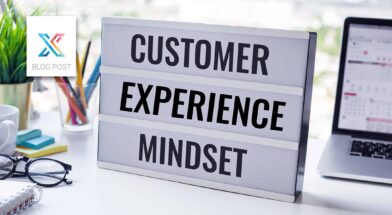Most AEC firms take great pride in the quality of their work and the relationships they build with clients. Firm leaders often believe they provide an outstanding client experience, supported by strong project delivery, technical expertise, dedicated teams, and repeat business. But what if your firm’s perception of its client experience doesn’t align with reality?
This common feedback myth—“We already know what our clients think, and they would tell us if there were any issues”—is a widespread belief among AEC firm leaders. However, the reality is quite different. Research shows that while 80% of professional services firm leaders believe they provide an above-average client experience, only 8% of clients agree. This stark contrast—what we call the Client Experience (CX) Gap—reveals a major blind spot for AEC firms that don’t consistently regularly collect and act on client feedback.
Operating without structured client feedback forces firms to rely on assumptions about what’s working and where improvements are needed. While leadership and project teams may feel they have a strong understanding of client needs, assumptions alone aren’t enough. Without consistently gathering client insights, your firm is likely missing critical information that impacts client satisfaction, retention, and long-term growth.
The Client Experience (CX) Gap: A Wake-Up Call for AEC Firms
The CX Gap is one of the biggest challenges in professional services, including AEC. Firms genuinely believe they are client-centric and deliver exceptional experiences, yet the vast majority of clients disagree. Why does this gap exist? Because firms rely on internal perspectives and assumptions instead of direct client feedback to measure and quantify the client experience.
Without a structured client feedback program, many firms assess client experience based on surface-level indicators like repeat business, a lack of complaints, or project success metrics. While these are important, they don’t tell the full story.
- Repeat business doesn’t necessarily mean a client’s expectations are met. Clients may return because of convenience, limited options, or strong individual relationships rather than a consistently great experience.
- A lack of complaints isn’t a sign of contentment. Many clients hesitate to voice concerns unless they reach a breaking point.
- Project success doesn’t always equate to a positive client experience. A project can be technically successful (on time, on budget, and with a successful outcome), but the project delivery experience might have been frustrating for the client due to poor communication, slow responsiveness, or inefficiencies.
AEC firms that rely on these assumptions risk making strategic decisions based on incomplete or misleading information. This is why firms that embrace ongoing, structured client feedback gain a significant competitive advantage.
The Silent Churn Problem: Clients Don't Always Voice Their Issues
One of the most dangerous misconceptions in client experience is that no news is good news. Many firms assume that if clients aren’t complaining, they must be happy. But the reality can be quite different.
Research shows that 1 in 4 clients have unvoiced complaints—issues they never share with a PM, PX, or anyone at the firm. These issues may seem minor on their own (or they could be significant), but over time, they accumulate and erode trust and loyalty. This contributes to silent churn, where clients slowly disengage and start giving their business to your competitors without ever expressing their frustrations.
Why don’t clients speak up?
- 90% of clients avoid conflict. Most people naturally shy away from confrontation. They don’t want to risk straining relationships, being perceived as difficult, or feeling that their concerns will be ignored. As a result, many clients remain silent about their frustrations, even when those issues impact their overall experience.
- Small frustrations accumulate. A single miscommunication may not be enough to drive a client away, but repeated issues—missed expectations, slow responses, or unclear deliverables—can erode trust over time.
- Clients often don’t have a structured and simple way to give feedback. Expecting clients to openly share challenging feedback face-to-face is unrealistic. If the process feels uncomfortable, inconvenient, or time-consuming, most clients will choose to stay silent rather than voice their concerns.
By the time firms notice that a client has moved on, it’s usually too late to repair the relationship. Without a system in place to surface and address unvoiced concerns, firms lose valuable business without understanding why.
Why Assuming You Know What Your Clients Think Hurts AEC Firms
When firms operate based on assumptions rather than real client insights, they risk making poor decisions that hurt business performance. Some common ways firms misinterpret client sentiment include:
- Assuming client loyalty based on repeat business. Just because a client keeps coming back doesn’t mean they’re satisfied. Many clients continue relationships out of habit, inertia, or a lack of better alternatives. But when a stronger competitor comes along, they’ll be willing to make the switch. (Share of Wallet is a better way to measure client loyalty)
- Relying on personal relationships instead of structured feedback. A strong relationship with an individual client contact is valuable, but it doesn’t provide a complete picture of the firm’s performance. What about other stakeholders involved in the project? How does your firm compare to competitors? Without structured data, firms only get partial insights.
- Believing that technical excellence equals client satisfaction. A great design or well-executed project doesn’t automatically translate to a great client experience. If communication is poor, schedules slip without explanation, or clients feel like they’re not being heard, their perception of the experience will suffer.
- Thinking that if clients don’t complain, they must be happy. Silence isn’t approval—it’s often a sign of disengagement. If clients don’t feel comfortable providing feedback, they may simply leave when frustrations accumulate, leaving firms wondering what went wrong.
The Solution: A Structured, Ongoing Client Feedback Program
To avoid these blind spots, AEC firms need a consistent, structured approach to collecting and acting on client feedback. The key is to make feedback easy and non-threatening for clients to share, ensuring firms gain honest, actionable insights to improve client experience.
What a Strong Client Feedback Program Looks Like
- Feedback is collected at multiple touchpoints. Instead of waiting until project completion, firms should check in at key project milestones. This ensures that any issues can be addressed in real-time rather than after the fact, allowing for course correction and elevating the experience along the client journey.
- Surveys are designed for ease and actionability. Traditional satisfaction surveys often suffer from low response rates, generic questions, and vague feedback. A more effective approach—such as asking great questions and measuring experience using Client Savvy’s patented 7-point Client Experience Indicator (CXI®) scale—focuses on client expectations rather than subjective satisfaction. This method results in twice the response rates, six times more actionable feedback, and five times more qualitative comments.
- Insights are analyzed and shared across teams. Client feedback isn’t just for project managers—it should inform marketing, business development, and firm leadership. Understanding client needs, pain points, and trends helps firms make smarter strategic decisions while holding the project team accountable.
- Feedback loops are closed. Collecting feedback isn’t enough—firms must act on it. AEC firms that proactively address concerns, follow up with clients, and make visible improvements build stronger relationships and reduce the risk of silent churn
The Business Impact of Proactive Client Feedback
Firms that prioritize client feedback don’t just improve client experience—they gain tangible business benefits:
- Higher retention rates. Firms that regularly engage clients and address concerns prevent small frustrations from turning into lost business.
- More referrals and repeat work. Satisfied clients are more likely to recommend your firm to others and return for future projects.
- Stronger differentiation in the market. A firm known for prioritizing client experience stands out in an industry where many competitors still rely on assumptions.
- More profitable projects. When expectations are clearly understood and managed, projects run smoother, scope creep is minimized, and costly rework is reduced.
Bridge the Gap: Why AEC Firms Must Treat Client Experience Like Safety
In the AEC industry, safety is a top priority for virtually every firm, especially in construction. Being "safety-first" isn’t just an aspiration—it’s a strategic, intentional, and operationalized function. It’s embedded into company culture and supported by people, processes, resources, budgets, systems, and metrics—all designed to ensure safety is a reality on every job site.
Yet, while many firms also claim to be client-centric, few have a similarly structured, strategic, and intentional approach to delivering a best-in-class client experience. Unlike safety, client experience often lacks the operational support, dedicated resources, and measurable benchmarks necessary to ensure consistent excellence.
The reality is that client experience cannot be just an aspiration—it must be intentional and strategic. Without a structured feedback system to measure and quantify client experience, as well as a way to benchmark progress, identify shortcomings, and track success, firms can only improve their client relationships so much. Those who fail to take a structured approach risk falling behind competitors who actively listen to their clients, adapt to their needs, and consistently refine their service delivery. In an industry where differentiation is increasingly difficult, firms that operationalize client experience will set themselves apart and build stronger, more loyal client relationships.
Stop Operating in the Dark–Listen to Your Clients Regularly
AEC firms can no longer afford to operate on assumptions. The CX Gap, unvoiced complaints, and silent churn problem highlight the risks of ignoring client feedback. Firms that embrace structured, ongoing feedback gain a clear understanding of client needs, uncover hidden pain points, and proactively improve their client experience—leading to stronger relationships, higher retention, and sustainable growth.
If your firm isn’t actively listening to clients through a structured client feedback program, now is the time to start. In today’s competitive AEC industry, an ongoing client feedback program isn’t just a bonus—it’s a necessity. The insights you gather can mean the difference between sustained growth and losing ground to competitors.





